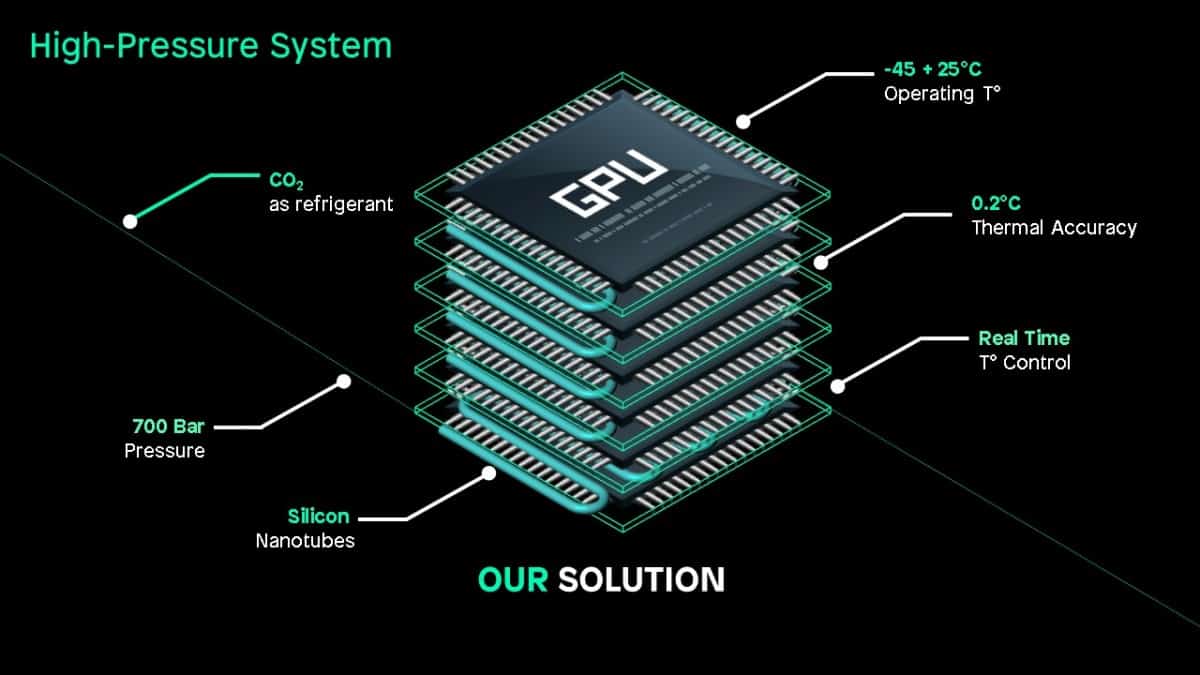
The Gerard & Anton Awards have been awarded once again! So it’s high time we take a closer look at the winners and what we can expect from these start-ups in the coming years. Today: Incooling.
Read all the articles on the Gerard & Anton Awards winners here.
Incooling Incooling develops cooling systems for data centers where the chip is cooled internally.
Founders: Rudie Verweij & others
Founded in: 2018
Number of employees: 6
Funding: €600,000 (angel investor)
What does Incooling do? “At the moment we are still building small numbers of prototype systems for cooling systems inside actual chips. We are constantly improving these. So at present we are mainly doing research and development. But ultimately we want to sell these cooling systems in chips and the infrastructure around them.”
How did the idea come about?
“During last year’s High Tech XL program, we were introduced to the cooling technology for the detectors which CERN used when they conduct their experiments. Those detectors are in the middle of the nuclear reactor. That’s how they see what happens during those experiments. As it gets very hot there, CERN has developed conduits for these detectors that allow them to pump liquid CO2 under high pressure so as to cool the detectors. Those conduits, like our concept, are as tiny as a hair.”
Why did you invent this product?
“If I look at how things went for me personally: I had experience with data centers for animation systems. There we were always having problems with computers that got overheated and slowed down because of that. This limits the creativity of the artists. They started using low resolutions to prevent overheating. This was at the expense of the quality of their animation. And before that, I was already working on water cooling systems as a hobby. When I saw the CERN system in passing, it was not a big stretch for me to use it to cool server systems. Then along came the next idea: ‘what if we put that inside the chip.’ The CO2 passes through fine conduits inside the chip, is boiled by the heat it absorbs and subsequently turns into gas. The gas goes to a heat exchanger where the CO2 is able to become cold and fluid again. Nowadays traditional data centers have been converted into very large refrigerators: ice-cold halls full of servers. These are super inefficient because up to 40% of the energy they consume is used for cooling. Cooling in chips like those we are developing definitely costs 10 times less.”
What is the long term goal of Incooling?
“The expectation is that by 2025, 20% of global power consumption will be spent on data centers. Up to 40% – depending on the temperature of the data center location – is used for cooling. If Incooling becomes a major player in the entire high end server market, it will have an impact. Then we become a ‘tech enabler’. Our cooling system is then able to make supercomputers possible which sometimes cost as much as a billion euros each. The computing power of these could be used for research into cancer and global warming, for example. We would like to do our bit to help. You will also be able to make your servers run faster and put them closer together. In addition, the cooling system used in chips has an impact on chip performance. We have the opportunity to push the semiconductor industry forward with our simple systems. Currently there are about 20 billion transistors inside a 2 cm by 1.5 cm chip. Those chips are as flat as a pancake. But these will soon become blocks of cheese because the industry is moving towards three-dimensional chips: three tiered layers for transistors. As they process more data, they become even warmer. The top layer of such a chip gets the least hot as it is able to dissipate the heat more easily. But how do you cool those lower and middle layers? That’s only possible with a system like ours.”
What are Incooling’s expectations for 2020?
“We aim to sell our first server cooling systems next year. That’s fairly soon. Hopefully these will be very fast servers with which we want to prove that our technology is truly the best. If we go in the right direction, we will soon have the fastest servers in the world. It is quite extraordinary that we do this in Eindhoven, where ASML chip machines are also made.”

